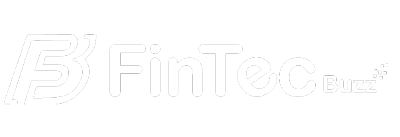The pressure facing financial leaders to deliver on efficiency, compliance, and growth has increased in the current business environment, where everything is driven by data. This is the point where Enterprise Resource Planning (ERP) and accounting software meet as the basis of scaled-up financial operations. ERP systems are centralized platforms of management of the important business processes, starting with the finance department and all through to the HR department, and the accounting modules make bookkeeping, reporting, and compliance tasks efficient.
United, they offer a cohesive financial system that increases visibility, control, and flexibility. To ensure a complicated organization hits the mark, strategic leaders steer toward the potential of ERP-accounting systems. The wide-range ERP systems integration is not only advantageous; more so, they are needed to scale and tap the strategic decision-making.
Table of Contents
1. The Core Functions of ERP and Accounting Software
2. Benefits of ERP-Accounting Integration
2.1. Seamless Financial Management
2.2. Real-Time Data Visibility
2.3. Audit & Compliance Readiness
2.4. Budgeting and Forecasting
2.5. Improved Financial Accuracy
3. Key Features that Drive Scalable Financial Systems
3.1. Bookkeeping Automation
3.2. General Ledger Management
3.3. Financial Control Tools
3.4. Forecasting & Budgeting Tools
3.5. Multi-Entity & Multi-Currency Capabilities
3.6. Compliance Features
4. ERP Implementation Strategy for Finance Teams
4.1. Assess Business Needs
4.2. Choose the Right ERP Vendor
4.3. Phased Implementation Approach
4.4. Training & Change Management
4.5. KPI Tracking & Feedback Loop
5. Cloud-Based ERP: A Game-Changer for SMBs and Enterprises
5.1. Affordability and Accessibility
5.2. Scalable Infrastructure
5.3. Automatic Updates
5.4. Third-Party Integrations
5.5. Popular Cloud ERPs
6. Challenges and How to Overcome Them
7. The Future of AI and Automation in ERP Accounting
Conclusion
1. The Core Functions of ERP and Accounting Software
In essence, the aim of ERP systems is to make business processes, which are fundamental to the company, integrated and automatic among the departments. This incorporates finances, purchasing, inventory, human resources, and customer management-it has ensured the regular exchange of data, and a reduced and lean operation. General ledger, accounts payable/receivable, fixed asset tracking, and financial reporting are some of the important functions that are done within the accounting modules within these systems.
Automation is one of the main benefits to be highlighted, and automated bank reconciliation, tax compliance, and payroll processing result in fewer manual mistakes and liberate finance divisions to do more strategic jobs. Enterprise resource planning systems handle growth in organizations as well, changing to cope with more transactions, new business divisions, and increased geographic presence. In the case of the CFOs, this scalability refers to the ability to stay in control and have insight even as the enterprise itself is growing.
2. Benefits of ERP-Accounting Integration
2.1. Seamless Financial Management
Linking ERP and accounting ensures that departmental silos no longer exist, this is because functions such as sales, procurement, and HR report directly to the finance department. This will make all transactions recorded in real-time, thus cutting duplication and supporting unified financial management. The end-to-end visibility of business performance offered by CFOs is essential to facilitate cross-cutting responsibility.
2.2. Real-Time Data Visibility
Contemporary CFOs need real-time information that will guide in formulating strategies. Embedded systems provide real-time access to dashboards, KPIs and financial statements so finance leaders can build liquidity, cash flow and budget compliance respectively as the chain of events takes shape. This nimbleness improves the ability to respond to market fluctuations and operational blockages.
2.3. Audit & Compliance Readiness
Because of the capabilities of ERP accounting integration, there are good audit trails, documentation, and internal controls, which reduce the burden of complying with the regulations. With SOX, IFRS, and GST requirements, cost reduction in doing reports and in identifying inconsistencies early is achieved through automation of such systems. In the case of CFOs, this will mean a reduction in audit findings and an enhanced risk management posture.
2.4. Budgeting and Forecasting
When all data about the historical and operational aspects reside in one system, the budget construction process will be more data-driven. Built-in tools enable CFOs to produce dynamic forecasts, model other financial conditions, and match departments with budgets. The results are more knowledgeable strategic planning and much less hesitant allocation of resources.
2.5. Improved Financial Accuracy
Errors can distort the finances, and this usually happens through manual methods. Transaction reconciliation across the departments of a company is done automatically by the ERP systems, thereby creating consistency between general ledger transactions, sales, and expenses. To CFOs, this precision becomes essential in attaining financial and accounting integrity and credibility among investors, regulators, and board members.
3. Key Features that Drive Scalable Financial Systems
3.1. Bookkeeping Automation
Integrated ERP-accounting can do rule-based automation of transaction categorization, journal entry, and recurring payment. It is not only accelerating month-end close, but it also unloads data entry, thus liberating the finance groups, who are consequently liberated to focus their time on higher strategy analysis.
3.2. General Ledger Management
The general ledger is the financial brain of the organization. Using the ERP systems, the financial information of the various functions and business units gets consolidated, thereby leading to centralized management of GL. CFOs obtain an integrated financial ledger that facilitates multi-dimensional reporting, thereby providing more details in finance.
3.3. Financial Control Tools
Internal controls are very crucial in the protection of assets as well as compliance actions. Major tools of ERP systems that give opportunities to CFOs to be sure in their compliance with their policies and reduce risks of fraud and errors are approval workflows, role-based permissions, and audit logs.
3.4. Forecasting & Budgeting Tools
Forecasting tools that run on ERP systems combine real-time sales, cost, and operation data, which results in more accurate, scenario-based planning. In this way, the CFOs will be able to plan and forecast the best and worst scenarios, keep track of the budgetary differences, and change strategic plans confidently, making financial management proactive.
3.5. Multi-Entity & Multi-Currency Capabilities
ERP systems enable consolidations of worldwide businesses or rapidly growing start-ups across subsidiaries, geographies, and currencies. All this can be done at one place, and CFOs can also handle intercompany transactions, prepare consolidated financial reports, and pay local taxes.
3.6. Compliance Features
The ERP systems have in-built features of compliance, like tax engines, individual country reporting templates, and document retention aid. The capabilities ease regulatory compliance and lower the operational overheads of finance departments while exposing them to minimal risk.
4. ERP Implementation Strategy for Finance Teams
4.1. Assess Business Needs
Previous to ERP selection or implementation, CFOs should direct an inter-functional audit to learn present financial activities, data holes, and points of misery. This makes the chosen system a response to the needs of important businesses, as well as satisfying strategic goals.
4.2. Choose the Right ERP Vendor
It is not every ERP platform that is equal. The appropriate cloud vs. on-premise delivery, integration compatibility, scalability, and industry specialization should be used to evaluate the best options by finance leaders. A product-specific solution can be a lot different than a product-focused solution.
4.3. Phased Implementation Approach
To mitigate risk, one will not overhaul systems in a single outburst; instead, go gradually to release the accounting module first. CFOs ought to place much focus on modules concerning ROI and business impact and proceed in stages, gradually, to other aspects such as procurement, HR, and CRM, as it is a fully developed company.
4.4. Training & Change Management
The other component of implementation that is easily ignored is user adoption. CFOs should enroll in change management programs, such as participatory training, organizational pole star, or open exposition of benefits. By enhancing the power of finance employees, it becomes possible to make the best out of the ERP.
4.5. KPI Tracking & Feedback Loop
Some of the performance metrics to monitor after implementation include close time, accuracy of reporting, and user adoption by financial teams. It is possible that such insights help CFOs to eliminate process inefficiencies and continue to refine them as well as quantify ROI, making sure that the ERP system can evolve to meet the business requirements.
5. Cloud-Based ERP: A Game-Changer for SMBs and Enterprises
5.1. Affordability and Accessibility
Cloud ERP solutions remove the huge capital costs that are associated with conventional systems. CFOs get an advantage of subscription-based pricing that lowers the upfront expense. Besides, the remote access allows the distributed finance teams to a seamlessly and effectively across geographical boundaries.
5.2. Scalable Infrastructure
Scaling cloud platforms is also very simple; introducing new users, departments, or business units does not require much involvement of IT. CFOs can help nourish the growth of the organization and not be interrupted by the sudden change due to disruptive infrastructure movement.
5.3. Automatic Updates
Software updates, security patches, and new features are rolled out automatically by vendors. This means that concerning the finance teams, they always have access to the most up-to-date compliance tools and technological advancements- without even relying on IT.
5.4. Third-Party Integrations
Current cloud-based ERPs support banks and CRMs, payroll software, and e-commerce systems through robust APIs and marketplaces to integrate them. The finance tech stack created by CFOs is customizable to fit the specifics of their operations.
5.5. Popular Cloud ERPs
Some of the platforms, such as NetSuite, QuickBooks Online Advanced, Zoho Books, and Xero, are useful to different-sized businesses and industries. They are also adapted to the growth of the firms: modular design enables CFOs to initiate smaller steps and build a strategic process. Thus, they can be used by high-growth startups and mid-market companies.
6. Challenges and How to Overcome Them
The implementation of ERP is not an easy task. The risks associated with data migration may hinder the process- CFOs need to spend heavily on proper data cleansing and mapping. Creating efficient user adoption requires a user-friendly interface and dashboards based on roles.
The help of certified consultants should be sought to control the complexity of integration. One should not customize too much, as it complicates upgrades and makes it costly for maintenance.
Finally, there has to be regulatory compliance using tools offered by the vendors who uphold country-oriented tax-related and reporting provisions. Taking a strategic stance, CFOs will be in a position to negotiate such challenges and create long-term financial value.
7. The Future of AI and Automation in ERP Accounting
ERP is catching up fast with artificial intelligence and automation. AI-based forecasting applications are now available that allow CFOs to estimate their revenue and expenditure based on past trends, market factors, and external factors. Manual audits are time-consuming, which is solved by automation of the compliance check, which detects any abnormalities in the system or potentially committed offenses in real-time.
In the situation of natural language queries, finance leaders will be able to access dashboards through a basic voice or text command, which democratizes data access and scales across the enterprise. Automated tracking of expenditure categorizes and reconciles expenditure, and enhances precision and accountability. Finally, it is possible to plan scenarios using predictive financial modeling and respond to economic changes, breaks in the supply chain, or drops in demand. And the CFO position is becoming more and more strategic, and AI is the driver.
Conclusion
ERP and accounting software have become a strategic requirement, rather than a luxury, to CFOs who wish to scale up and take control. Their connection allows smooth financial processes, improves information-based decision-making, and increases compliance systems.
Smart finance leaders can prepare their organizations to be resistant to volatility and inefficiencies by making the right investment in an ERP system and method of implementing it. After all, in the era of augmenting financial complexity, it is the unified and automated platforms that would divulge the visibility and agility contemporary CFOs are after.
This is the moment to review your systems and to access the full capabilities of ERP-accounting integration.
Stay Ahead of the Financial Curve with Our Latest Fintech News Updates!



